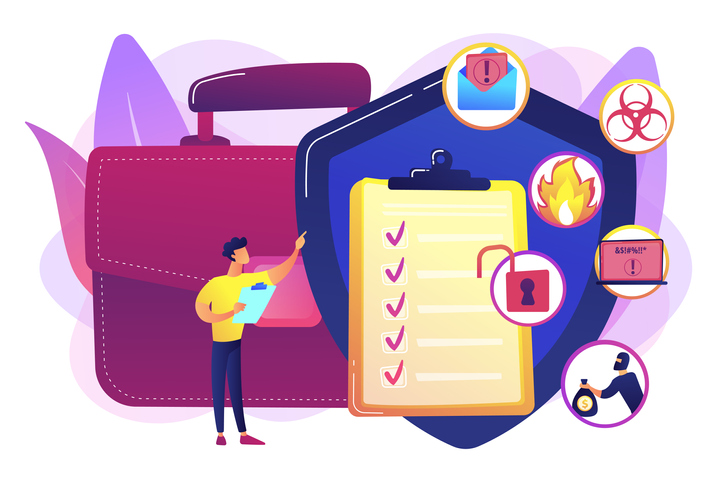
©Visual Generation/iStock/Getty Images Plus
Business as usual is subject to severe disruption in ways we cannot always readily anticipate. However, as a corollary of that lesson, organizations have learned the importance of having an infrastructure in place to maintain core business functionality in the event of unforeseen circumstances.
The statistics are sobering. According to a report from the Federal Emergency Management Agency, 40% of businesses do not reopen following a disaster. An ability to plan and execute continued operations is necessary to avoid becoming part of this unfortunate statistic – and it has as much (if not more) to do with employees as with the bottom line.
First, whether employees are office-based or remote, there is no substitute for communication between leadership and the workforce. The better and clearer the communication, the greater the psychological security for those who depend on the effective guidance of leadership. Even under “normal” circumstances, this is a constant process.
Next, the core elements of working life to which employees have become accustomed must be maintained in reliable working order. These are the aspects of the employee experience that collectively constitute a relationship of trust between employee and employer. It goes beyond payroll; accurate tracking of time for those who clock in and out, the ability to submit expense reports and access to performance reviews are just a few examples.
Note this is also a two-way street. For example, employees should have the ability to complete surveys, which in turn provide leaders with a much-needed “pulse” on present attitudes as they apply to teams, departments or even the company as a whole.
Change creates opportunity to recalibrate and optimize your present organizational infrastructure in a way that enhances the employee experience, strengthens trust with existing employees and provides a means of attracting and retaining new ones.
But how can these objectives be accomplished?
Turning to technology and updating processes
The emergence of self-service technology has been a game-changer for the world of work. It gives employees more leeway to take care of business on their own – whether that means accomplishing tasks or finding answers to questions – which, in turn, allows other staff members to make more efficient use of their time. Does your organization provide a self-contained, self-service system along these lines?
Another question to ask yourself is how your organization will disseminate new procedures (or anything else that will require your employees’ understanding). Let’s say, for example, you want to train employees on new accounting procedures. With a cutting-edge learning platform, this training could take the form of microlearning content – quick videos uploaded by supervisors and assigned to employees at the touch of a button. After watching the video, with a few clicks on their smartphones, employees can then demonstrate their understanding of the content by recording and uploading their own videos to show skills mastery.
These and other tools, which should all be accessible within a single system, contribute to increased employee engagement. That means lower turnover rates, a more nurturing company culture and a reduction in the various operational costs associated with a disengaged workforce – all things from which your bottom line can only benefit! For example, according to employee engagement experts, a better employee experience can reduce turnover by 40%.
Taking care of hiring and onboarding needs
Understandably, not all industries find themselves in a hiring crunch right now. But for those in need of new staff, a heightened sense of urgency may exist.
Keep in mind, according to research conducted by the Aberdeen Group, organizations that make onboarding a priority enjoy 54% higher employee engagement and 62% higher productivity.
Your HR technology should allow you to automatically post open positions across top job boards and career sites from one place and move new hires to onboarding with no data re-entry. With that same single-software application, equipping new team members to hit the ground running on their first day is easy. Information from a candidate’s application should flow seamlessly into payroll, the employee’s HR forms, background checks and other tools you use to facilitate training, scheduling and even electronic signing of documents.
Plus, the same information should be instantly available to employees and managers, according to their permission levels. This can only happen when every HR process is executed from the same central tool. When the employee’s data remains in the same database – no matter whether you’re hiring them, managing them or promoting them – both HR and managers are able to focus on the work that really matters, rather than checking or entering information into an HR database.
Conclusion
A lot of opportunity remains in the present moment to assess what works about your current organizational setup, identify areas ripe for improvement and proceed to revamp and revitalize accordingly. With the right tools in hand, you may position yourself to come out stronger than ever!
For more information, we encourage you to watch our free on-demand webinars, C-Suite Guide Series: How to Build an Employee Continuity Plan and C-Suite Guide Series: Offense or Defense.